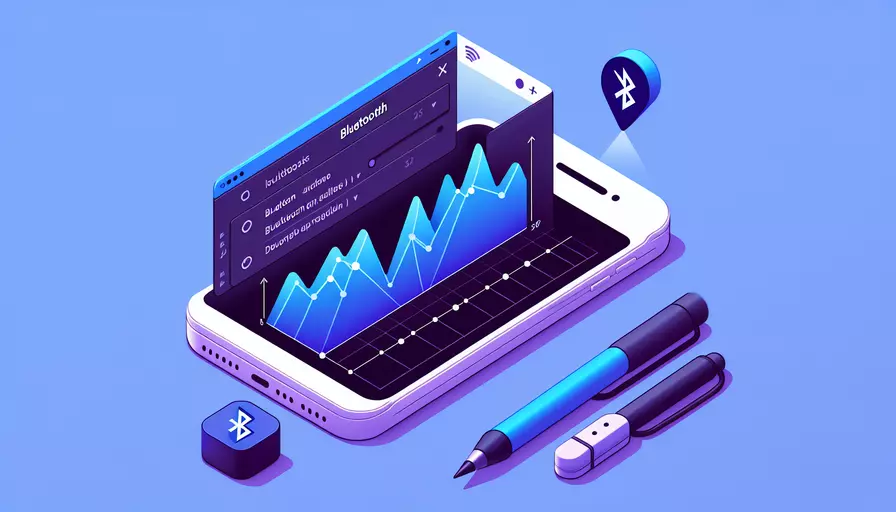
Vue 调用手机蓝牙的方法主要有以下几点:1、使用Web Bluetooth API、2、引入插件库、3、集成原生应用,通过这些方法实现与蓝牙设备的通信。具体方法如下:
一、使用Web Bluetooth API
Web Bluetooth API 是一种允许网页通过蓝牙连接并与设备通信的方式。以下是实现步骤:
-
检查浏览器兼容性:
确保使用的浏览器支持 Web Bluetooth API。可以通过以下代码检查:
if (navigator.bluetooth) {console.log('This browser supports Web Bluetooth API');
} else {
console.log('This browser does not support Web Bluetooth API');
}
-
请求设备连接:
使用
navigator.bluetooth.requestDevice方法请求蓝牙设备连接。async function connectBluetooth() {try {
const device = await navigator.bluetooth.requestDevice({
acceptAllDevices: true,
optionalServices: ['battery_service']
});
console.log(`Connected to device: ${device.name}`);
} catch (error) {
console.error(`Error: ${error}`);
}
}
-
获取服务和特征:
获取设备的服务和特征,以便进行读写操作。
async function getBatteryLevel(device) {const server = await device.gatt.connect();
const service = await server.getPrimaryService('battery_service');
const characteristic = await service.getCharacteristic('battery_level');
const value = await characteristic.readValue();
console.log(`Battery level: ${value.getUint8(0)}%`);
}
二、引入插件库
除了原生的 Web Bluetooth API,还可以使用一些第三方插件库来简化蓝牙操作,例如 web-bluetooth、noble 等。
-
安装插件:
使用 npm 安装所需的插件库。
npm install noble -
使用插件:
在 Vue 组件中引入并使用插件库进行蓝牙操作。
import noble from 'noble';export default {
methods: {
startScanning() {
noble.on('stateChange', (state) => {
if (state === 'poweredOn') {
noble.startScanning();
} else {
noble.stopScanning();
}
});
noble.on('discover', (peripheral) => {
console.log(`Discovered peripheral: ${peripheral.advertisement.localName}`);
noble.stopScanning();
});
}
}
}
三、集成原生应用
如果需要更复杂的蓝牙操作,可以考虑将 Vue 项目与原生应用集成,例如通过 Cordova、Capacitor 等框架。
-
安装 Capacitor:
使用 npm 安装 Capacitor。
npm install @capacitor/core @capacitor/cli -
初始化 Capacitor:
初始化 Capacitor 项目。
npx cap init [appName] [appId] -
添加平台:
添加 Android 或 iOS 平台。
npx cap add androidnpx cap add ios
-
使用 Capacitor 插件:
使用 Capacitor 提供的蓝牙插件进行操作。
import { BluetoothSerial } from '@ionic-native/bluetooth-serial';export default {
methods: {
connectToBluetooth() {
BluetoothSerial.connect('00:11:22:33:44:55').subscribe(success => {
console.log('Connected successfully');
}, error => {
console.error('Connection failed', error);
});
}
}
}
总结
总结主要观点:通过使用 Web Bluetooth API、引入插件库、集成原生应用,可以实现 Vue 调用手机蓝牙的功能。具体方法包括检查浏览器兼容性、请求设备连接、获取服务和特征、使用第三方插件库、使用 Capacitor 等框架集成原生应用。
进一步建议或行动步骤:在实际开发中,选择合适的方法根据具体需求和项目环境。对于简单的蓝牙操作,Web Bluetooth API 已经足够,而对于复杂的蓝牙交互,可以考虑使用插件库或集成原生应用。确保测试在目标设备上的兼容性和性能,以提供最佳的用户体验。
相关问答FAQs:
1. Vue如何检测手机是否支持蓝牙功能?
在Vue中,要检测手机是否支持蓝牙功能,可以使用HTML5的蓝牙API来实现。首先,可以使用navigator.bluetooth对象来检测是否存在蓝牙功能。通过判断navigator.bluetooth是否为undefined,可以确定手机是否支持蓝牙功能。如果navigator.bluetooth存在,则说明手机支持蓝牙功能,否则则不支持。
2. Vue如何扫描并连接蓝牙设备?
要在Vue中扫描并连接蓝牙设备,可以使用HTML5的蓝牙API。首先,可以使用navigator.bluetooth.requestDevice方法来扫描附近的蓝牙设备。该方法会弹出一个设备选择框,用户可以选择要连接的设备。一旦用户选择了设备,可以使用device.gatt.connect方法来连接设备。
在Vue中,可以通过点击按钮来触发扫描和连接蓝牙设备的操作。可以使用Vue的事件绑定来监听按钮点击事件,在事件处理函数中调用相应的蓝牙API方法来实现扫描和连接操作。
3. Vue如何与蓝牙设备进行数据交互?
在Vue中与蓝牙设备进行数据交互,需要使用HTML5的蓝牙API提供的特征(Characteristic)和服务(Service)。首先,可以使用device.gatt.getPrimaryService方法获取设备的主服务。然后,可以使用service.getCharacteristic方法获取特定服务的特征。
一旦获取到特征,可以使用characteristic.readValue方法读取特征的值,或使用characteristic.writeValue方法向特征写入数据。通过读写特征的值,可以与蓝牙设备进行数据交互。
在Vue中,可以通过点击按钮来触发读取或写入特征值的操作。可以使用Vue的事件绑定来监听按钮点击事件,在事件处理函数中调用相应的蓝牙API方法来实现数据交互。
文章标题:vue如何调用手机蓝牙,发布者:不及物动词,转载请注明出处:https://worktile.com/kb/p/3657662

 微信扫一扫
微信扫一扫  支付宝扫一扫
支付宝扫一扫 